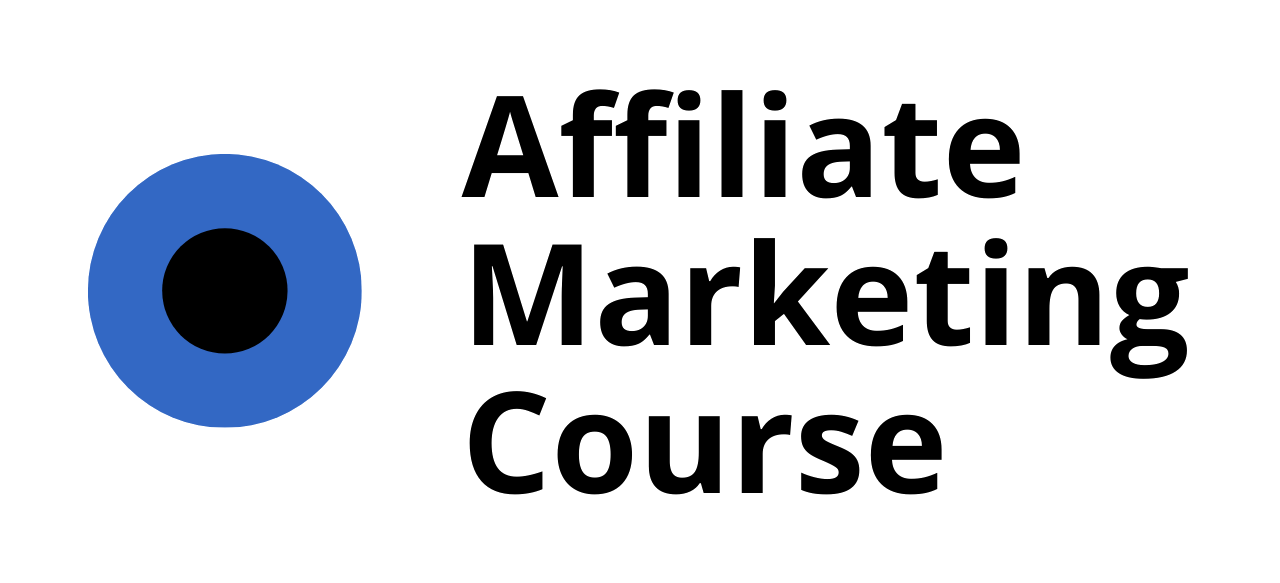In today’s competitive digital landscape, businesses are constantly seeking innovative ways to enhance their affiliate marketing strategies. One such powerful tool that has emerged as a game-changer is Google Ads. By strategically integrating Google Ads into your affiliate marketing efforts, you can unlock unprecedented opportunities to reach a highly targeted audience, drive meaningful engagement, and achieve exceptional results. Whether you’re looking to expand your reach, improve conversion rates, or maximize ROI, leveraging Google Ads for affiliate marketing offers a unique blend of precision and effectiveness. This article delves into the intricacies of using Google Ads for affiliate marketing, exploring its benefits, practical steps to get started, and proven best practices to ensure your campaigns hit the mark. From optimizing your ad placements to refining your targeting criteria, we’ll walk you through everything you need to know to elevate your affiliate marketing strategy with Google Ads and take your business to the next level.
Key Takeaways
– Leverage Targeted Advertising: Use Google Ads to reach specific audiences based on interests, behaviors, and demographics for more relevant campaigns.
– Enhance Measurability: Track performance with tools like Google Analytics to monitor metrics such as click-through rates, conversions, and ROAS for data-driven decisions.
– Boost Credibility: Associate your affiliate program with trusted Google Ads to increase consumer confidence and engagement.
– Expand Global Reach: Tap into Google’s extensive network to target users worldwide, broadening your affiliate recruitment and potential revenue streams.
– Optimize with A/B Testing: Experiment with ad creatives to refine strategies, improving conversion rates and overall campaign effectiveness.
– Maximize Budget Efficiency: Focus on specific niches and demographics to get the highest return on your ad spend.
– Seamless Integration: Connect your affiliate tracking software with Google Ads and Google Analytics for comprehensive performance monitoring.

Benefits of Using Google Ads for Affiliate Marketing
Google Ads offers several compelling advantages for affiliate marketers, making it a powerful tool for driving traffic, revenue, and building brand awareness. Below are the key benefits:
- Targeted Advertising : With Google Ads, affiliates can precisely target their audience based on demographics, interests, behaviors, and location, ensuring that ads reach the most relevant users.
- Scalable Campaigns : Affiliates can easily scale their advertising efforts during peak seasons or product launches, quickly adjusting budgets to maximize ROI.
- Flexible Budgeting : Google Ads allows affiliates to set daily budgets, pausing or adjusting campaigns as needed, without long-term commitments.
- Testing and Optimization : Affiliates can experiment with different ad creatives, headlines, and landing pages to identify what resonates best with their audience, optimizing performance over time.
- Access to a Broad Audience : Google Ads reaches millions of users globally, providing affiliates with extensive reach across various devices and platforms.
- Measurable Results : Affiliates can track key metrics like click-through rates, conversion rates, and ROI, allowing them to refine their strategies for better outcomes.
- Credibility and Trust : As part of Google’s ecosystem, Google Ads campaigns are often seen as more trustworthy by consumers, enhancing affiliate credibility.
- Long-Term Partnerships : Google Ads fosters ongoing relationships between affiliates and merchants, enabling collaborative efforts to promote shared goals.
For those looking to enhance their affiliate marketing skills, AffiliateMarketingCourse.biz offers comprehensive courses and resources to help affiliates leverage Google Ads effectively. By utilizing these tools, affiliates can unlock new opportunities for growth and success in their marketing endeavors.
Getting Started with Affiliate Marketing Using Google Ads
To begin your affiliate marketing journey with Google Ads, follow these organized steps:
- Establish Your Platform :
- Create a website or blog to host your affiliate links. This serves as your hub for content and promotions.
- Join Affiliate Programs :
- Enroll in affiliate programs that align with your niche. Look for programs offering in-demand products and use tools like Google Trends to identify popular items.
- Set Up Google Ads Campaign :
- Create a Google Ads account and launch targeted campaigns using relevant keywords identified through the Keyword Planner. Ensure keywords have sufficient search volume and are tailored to your products.
- Craft Compelling Ad Creatives :
- Design eye-catching ad creatives with clear headlines and visuals. Focus on attracting clicks by highlighting benefits and ensuring your landing pages are optimized for conversions.
- Monitor Performance and Optimize :
- Track metrics like click-through rate (CTR), conversion rates, and costs. Adjust ad copy, headlines, and visuals based on performance data to enhance effectiveness.
- Comply with Policies and Disclosures :
- Adhere to Google’s AdSense policies. Clearly disclose your affiliate relationships to avoid violations and maintain trust with your audience.
- Build Audience Engagement :
- Foster a community around your content through regular updates and valuable information. Engage with your audience to encourage traffic growth.
- Track and Analyze Results :
- Utilize Google Analytics and other tools to monitor traffic sources, earnings, and campaign effectiveness. Set goals to measure success and adjust strategies accordingly.
- Consider Legal Aspects :
- Ensure compliance with legal requirements, including clear disclosure of affiliate relationships to protect your brand and avoid penalties.
- Scale and Optimize :
- Test various campaigns, scale successful ones, and remain patient as building traffic and conversions takes time. Regularly review your strategy to adapt to market changes.
By following these steps, you can effectively leverage Google Ads to promote affiliate products, driving traffic and potentially increasing your affiliate earnings.

Best Practices for Affiliate Marketing with Google Ads
Affiliate marketing with Google Ads can be highly effective when executed properly. Below are proven strategies to maximize your campaign’s success and achieve better returns on investment (ROI).
1. Leverage Targeted Campaigns
Start by defining your target audience to ensure your ads reach the right people. Use Google Ads’ demographic and interest targeting options to refine your audience based on age, gender, location, and behaviors. This ensures your budget is spent efficiently and conversions are maximized.
a. Audience Selection
Select audiences who are most likely to convert. Consider factors like purchase history, income level, and browsing behavior. Google Ads allows you to create custom audiences for precise targeting.
b. Negative Targeting
Use negative targeting to exclude irrelevant audiences. For example, if you’re promoting tech products, exclude users who are not in your target demographic or unlikely to convert.
c. Ad Placement
Choose the right placements to ensure your ads appear in the most suitable contexts. Opt for high-performing placements like search results, Google Search Partner sites, and YouTube videos to maximize visibility and engagement.
2. Craft Persuasive Ad Copy
Your ad copy plays a crucial role in capturing attention and driving clicks. Create compelling headlines and descriptions that highlight the value proposition of the product or service you’re promoting.
a. Headline Tips
Use clear and concise headlines that immediately communicate the offer. Make sure to include a call-to-action (CTA) within the headline to encourage clicks.
b. Description Text
Write descriptive text that provides more detail about the product or service. Include benefits, features, and any unique selling points to entice users to click through.
c. Call-to-Action (CTA)
Include a strong CTA in your ad copy. Phrases like “Shop Now,” “Get Started,” or “Learn More” can significantly increase conversion rates.
3. Optimize Your Budget
Budget management is critical to achieving a high ROI. Allocate your budget wisely by focusing on high-performing campaigns and adjusting bids based on performance.
a. Manual Bidding
Consider using manual bidding strategies like “Target CPA” or “Maximize Conversions.” These strategies allow you to control your spending and optimize for the best outcomes.
b. Automated Bidding
For simplicity and efficiency, use automated bidding options like “Auto Bid” or “Ad Scheduler.” These tools can help you manage your budget effectively while still achieving good results.
4. Monitor and Analyze Performance
Continuous monitoring and analysis are essential for optimizing your campaigns. Use tools like Google Analytics and Google Tag Manager to track key metrics such as click-through rate (CTR), cost per acquisition (CPA), and return on ad spend (ROAS).
a. Performance Tracking
Regularly review your campaign performance reports to identify areas of improvement. Look for trends and adjust your strategy accordingly to maximize results.
b. A/B Testing
Experiment with different ad copies, headlines, and visuals to determine what resonates best with your audience. Small changes can lead to significant improvements in performance.
5. Stay Compliant with Policies
Always adhere to Google Ads policies to avoid penalties and maintain the trust of your audience. Ensure your ads comply with regulations regarding misleading claims, spam, and privacy.
a. Disclosure Requirements
Clearly disclose any partnerships or affiliations in your ad copy. This builds transparency and helps protect your brand reputation.
b. Regular Audits
Conduct regular audits of your campaigns to ensure compliance with policies. This proactive approach can prevent issues and safeguard your account from violations.
6. Invest in Continuous Learning
Stay updated on the latest trends and best practices in affiliate marketing and Google Ads. Attend webinars, read industry blogs, and consider enrolling in courses to enhance your skills and knowledge.
a. Industry Resources
Utilize reputable resources like AffiliateMarketingCourse.biz to gain valuable insights and strategies for success.
b. Networking Opportunities
Join online communities and forums to connect with other affiliate marketers. Sharing experiences and learning from others can provide fresh ideas and inspiration.
By following these best practices, you can maximize your affiliate marketing efforts with Google Ads and achieve long-term success. Remember to continuously test, analyze, and optimize your campaigns to stay ahead of the competition.

Key Benefits of Integrating Google Ads into Your Affiliate Marketing Strategy
Integrating Google Ads into your affiliate marketing strategy can offer several advantages, enhancing both your reach and effectiveness. Here are the primary benefits:
- Targeted Advertising:** Google Ads allows you to target specific audiences based on their interests, behaviors, and demographics, ensuring your affiliate campaigns resonate with the right people.
- Measurability:** Track the performance of your campaigns using tools like Google Analytics to monitor metrics such as click-through rates, conversions, and return on ad spend (ROAS), enabling data-driven optimizations.
- Credibility and Trust:** Associating your affiliate program with Google Ads can enhance credibility, as consumers often trust Google-branded ads, increasing the likelihood they’ll engage with your offers.
- Global Reach:** Leverage Google’s extensive network to target users worldwide, expanding your affiliate recruitment pool and potentially increasing your program’s reach and revenue.
- A/B Testing Capabilities:** Experiment with different ad copies, headlines, and visuals to identify what performs best, allowing you to refine your strategy for better conversion rates.
- Budget Efficiency:** Optimize your ad spend by targeting specific niches and demographics, often leading to higher returns compared to less targeted advertising methods.
- Seamless Integration:** Effortlessly connect your affiliate tracking software with Google Ads and Google Analytics for comprehensive performance monitoring and adjustments.
Top Strategies for Effectively Using Google Ads in Your Affiliate Marketing Campaign
Google Ads can be a powerful tool for affiliate marketers looking to scale their campaigns and achieve better ROI. Here are some proven strategies to optimize your approach:
- Targeted Audience Selection: Leverage Google Ads’ robust targeting options to focus on specific demographics, interests, and behaviors that align with your affiliate offers. Use tools like Google AdWords to define your audience precisely.
- Keyword Research and Selection: Conduct thorough keyword research to identify high-intent keywords relevant to your niche. Long-tail keywords often yield better results due to their specificity and lower competition.
- Ad Copywriting: Craft compelling ad copy that highlights the unique benefits of your affiliate products. Use action verbs and create a sense of urgency to encourage clicks and conversions.
- Budget Allocation: Start with a modest budget and allocate funds to test different campaigns. Focus on niche-specific ads initially and scale up based on performance data.
- Landing Page Optimization: Ensure your landing pages are optimized for both conversion rates and user experience. Create dedicated landing pages for each affiliate offer to improve relevance and reduce bounce rates.
- Remarketing and Retargeting: Use Google Ads to retarget visitors who showed interest in your affiliate offers. Display ads to users who visited your site but didn’t convert initially.
- Cross-Promotion with Other Affiliates: Partner with other affiliates to promote each other’s offers. This can expand your reach and provide diverse options for your audience.
- Seasonal Promotions: Align your Google Ads campaigns with seasonal events or holidays to capitalize on increased shopping activity and higher conversion rates.
- Continuous Testing and Optimization: Regularly test different ad creatives, keywords, and landing pages. Use analytics tools to track performance and make data-driven decisions to improve ROI.
By implementing these strategies, you can maximize the effectiveness of your Google Ads campaigns and achieve greater success in your affiliate marketing endeavors.

Effective Use of Google Ads for Affiliate Marketing Strategy
To effectively leverage Google Ads for your affiliate marketing efforts, follow these organized steps:
1. Set Clear Goals
- Define your objectives, such as increasing traffic to your affiliate landing page or driving sign-ups for your newsletter.
2. Conduct Thorough Keyword Research
- Utilize the Google Keyword Planner to identify relevant keywords.
- Consider long-tail keywords for less competition and more targeted approaches.
3. Craft Compelling Ad Copy
- Use action verbs like “Discover,” “Learn,” or “Get.”
- Include a clear call-to-action (CTA), such as “Join Now” or “Start Free Trial.”
- Strategically incorporate affiliate links without compromising ad appeal.
4. Target the Right Audience
- Opt for the Google Search Network to capture active searches.
- Focus on websites aligned with your niche for display ads.
5. Allocate Budget Wisely
- Begin with a modest daily budget, e.g., $50, and adjust based on performance.
- Monitor ROI by calculating returns on ad investments.
6. Optimize Campaigns Regularly
- Analyze performance and refine ads, headlines, and CTAs.
- Engage in A/B testing to enhance effectiveness.
7. Implement Tracking Systems
- Set up Google Analytics and tracking pixels on landing pages.
- Establish conversion tracking for affiliate links to gauge success.
8. Stay Compliant
- Adhere to guidelines against deceptive practices.
- Maintain transparency in affiliate relationships to build trust.
9. Explore Additional Formats
- Consider shopping ads for product promotions.
- Use retargeting ads to re-engage visitors who didn’t convert initially.
10. Keep Abreast of Trends
- Stay informed about new Google Ads features and marketing strategies.
- Follow industry leaders and newsletters for updates.
11. Differentiate Your Approach
- Analyze competitors without excessive time investment.
- Innovate through unique content and improved targeting.
By methodically applying these strategies, you can enhance your Google Ads performance, driving better results for your affiliate marketing efforts.




0 Comments